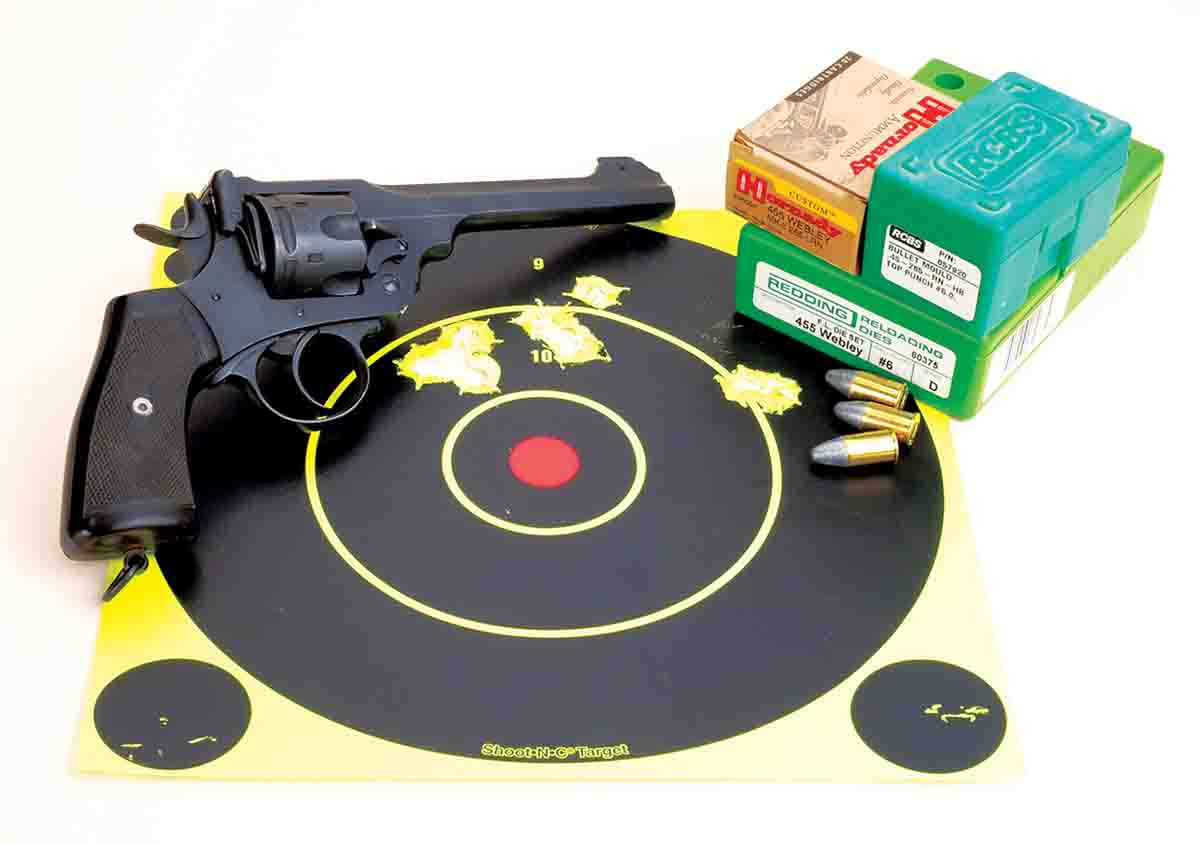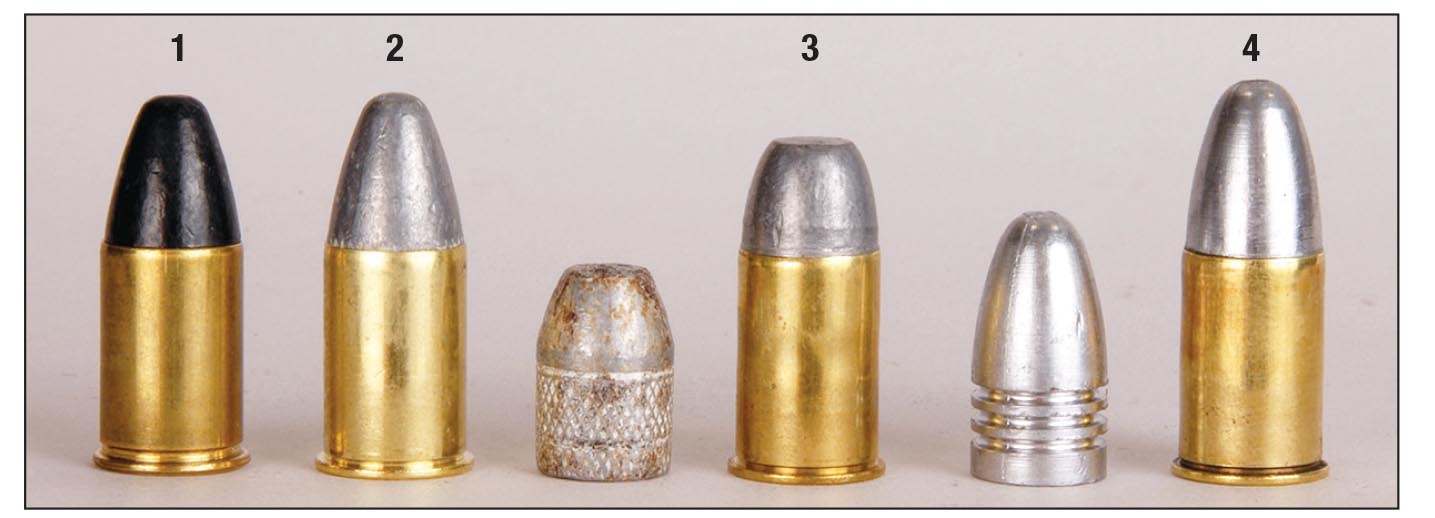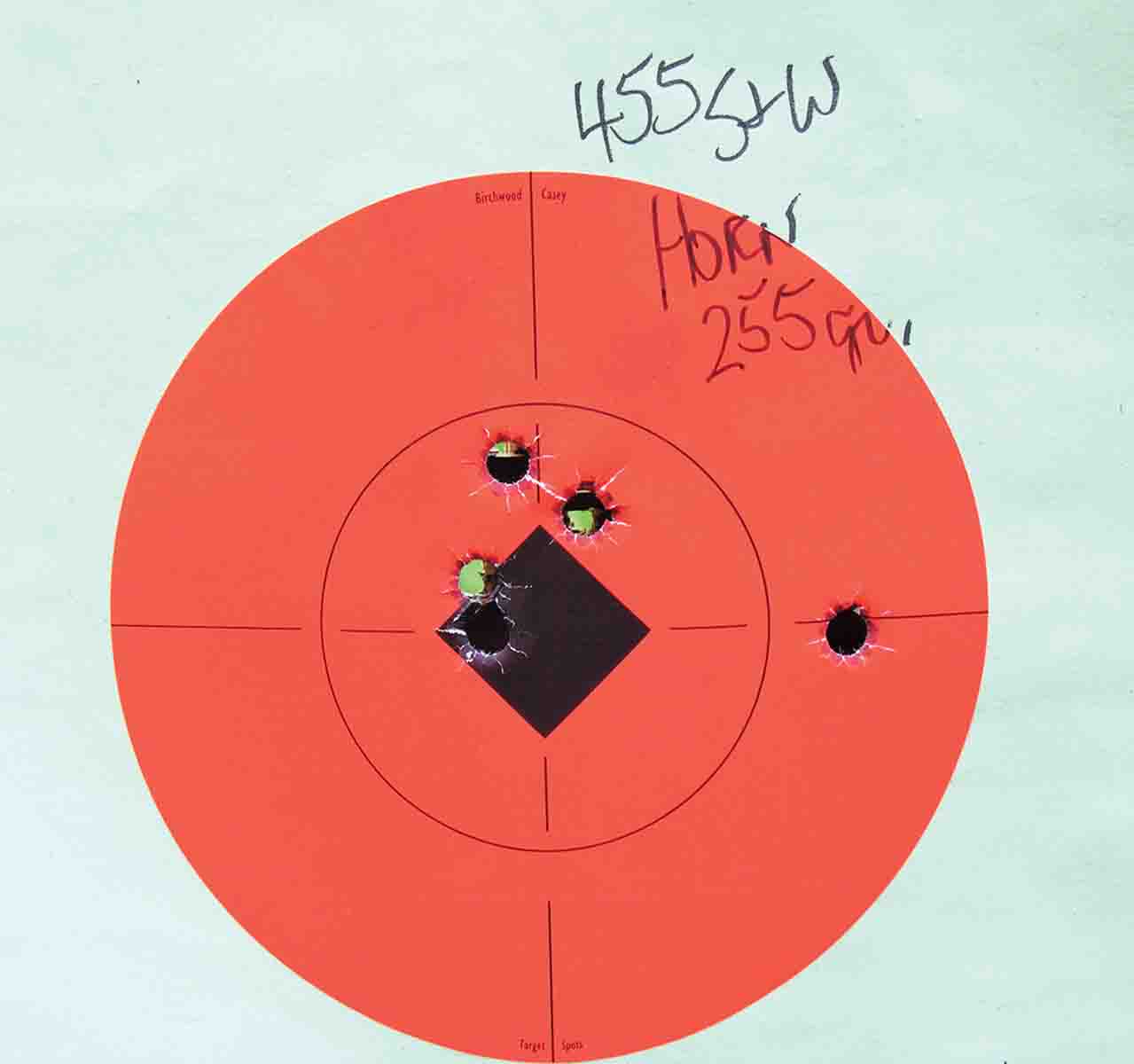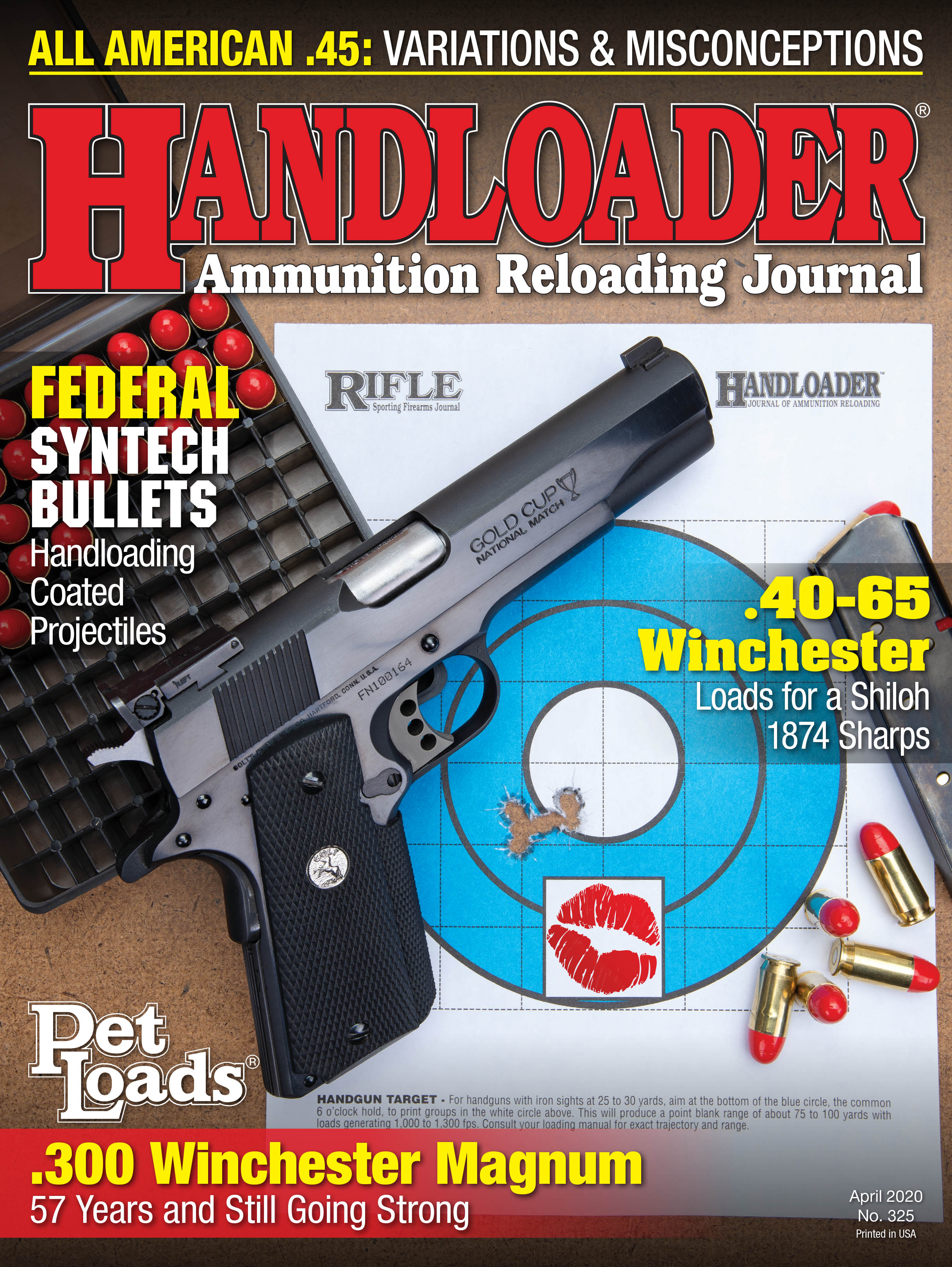Mike's Shootin' Shack
Smith & Wesson Webley .455s
column By: Mike Venturino | April, 20
Twice in the twentieth-century, Britain declared war on Germany when woefully short of firearms. In 1914 and 1940, its
.jpg)
The first 5,000 sent overseas were First Model Hand Ejectors, commonly referred to now as “Triple Locks.” That particular model has achieved a near reverent status among Smith & Wesson collectors as one of the (if not the) finest big-bore revolvers ever made. One factor for which Triple Locks are noteworthy was as an introductory revolver for Smith & Wesson’s new .44 Special cartridge. Less well-known is that a few were also chambered for .45 Colt. Because revolvers for .45 caliber were already being made, a switch to .455 Webley was readily feasible. Despite their different cartridge names, S&W factory barrel bore and groove diameters for Colt and Webley cartridges were the same.
Be that as it may, the Brits were not totally satisfied with those first 5,000 S&W .455s, with one complaint being that the mud in France tended to bind their finely-fitted mechanisms. This has often been pointed to as the major reason Smith & Wesson dropped the First Model Hand Ejector’s third locking lug on the cylinder crane. Domestically, Triple Locks were not selling all that well. Not counting the British purchase of 5,000, only about 15,000 were sold in the U.S. between 1907 and 1915. Dropping the third lock allowed a retail price reduction from $17.00 to $15.00 and hopefully meant better sales.

Despite the fact that the British .455s were intended for battlefield use, Smith & Wesson gave them the same excellent fit and finish standard for its commercial revolvers. As far as I can ascertain in comparing my Second Model Hand Ejector .44 Special to the same model in .455, the only difference is the latter has a lanyard ring in the butt. Otherwise both revolvers share the same 6½-inch barrel length and half-moon front sight with corresponding groove down the topstrap as the rear sight. Stocks on both are very slender, checkered walnut.
That the British considered its .455 Webley as a suitable combat cartridge for two world wars has to make modern-day combat pistol trainers shake their heads in wonder. The round is bullet-heavy at 265 grains (British Military Mk II) and velocity-light at a muzzle velocity of 620 fps. Case length is a short .77 inch. A few years back, I bought a few steel U.S. Army helmets at a surplus store. Just for curiosity’s sake, I put one on a fence post and shot at it with several military revolvers from about 50 feet. The .455 was a Fiocchi factory load with a 262-grain lead bullet chronographed at an average of 645 fps from my S&W’s 6½-inch barrel. The helmet received a dent and wobbled about on the post. Conversely, a 230-grain FMJ from a S&W Model 1917 .45 ACP with a 5½-inch barrel lifted the helmet off the post and rolled it about 20 feet on the ground. The helmet wasn’t penetrated, but the site of impact caved in severely.

At its inception in the late 1880s, the British loaded its .455s with black powder and chambered its Webley line of double-action top breaks for it. Webley .455 revolvers started at Mk I and progressed to MK VI. That last one was introduced in 1916. About 1928, the British decided .455 revolvers, both S&Ws and Webleys, were too large and adopted the much lighter Enfield .38/200. However, .455s remained in service through World War II and beyond. Webley Mk VIs had 5-inch barrels. Their rear sights were V-notches as part of top break release levers. However, front sights were pinned on and could be switched for higher or lower blades as required for zeroing.

Upon deciding to build a collection of World War II firearms, I encountered something of which I should have been aware. Many Webley Mk VIs and Smith & Wesson Hand Ejector .455s have had their cylinders faced off to accommodate the .45 ACP (Webley) and .45 Colt (S&W). The reason I should have been aware was that back in the 1970s I owned a S&W .455 converted to .45 Colt, actually a fine shooting revolver. Regardless, when buying my first Webley .455 it was dismaying to find that it had been converted to .45 ACP. That one was sold to a friend and an unaltered Mk VI was located.
Becoming a .455 handloader was easy. At that time Hornady had made a special run of .455 Webley factory ammunition exclusively for a distributor. Hornady .455 brass was also available and Fiocchi .455 factory loads were and still are available. To my surprise, RCBS offered a hollowbase mould (455-265 WEBLEY) in its special order section. Albeit slow to cast, being of hollowbase design, the RCBS bullet does shoot well in both my .455 revolvers. However, in experimenting with powder charges and bullets I found that Hornady’s 255-grain “Cowboy” swaged lead bullet shot just as accurately. It is my mainstay in .455 shooting, except when duplicating factory and military ballistics.
Keeping things simple, I only use Bullseye as my .455 propellant. A charge of 4.0 grains pushes the 255-grain swaged Hornady bullets to just over 700 fps, and 3.4 grains with the RCBS 265-grain cast bullets gives about 610 fps. Recoil is very mild in both of those nigh-on 3-pound revolvers, which is a boon to older shooters with arthritic hands.


